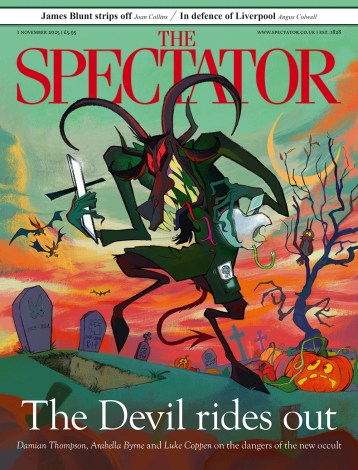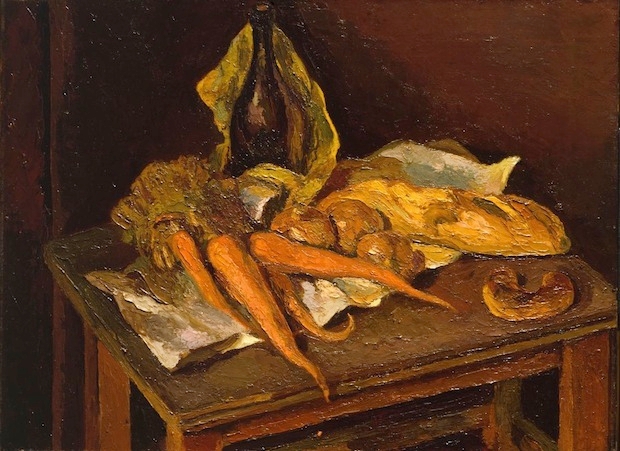Virginia Woolf (1882–1941) claimed that nothing has really happened until it has been recorded, so this new exhibition at the NPG devoted to her life can only now be said to have happened — for here I am recording it. Of course it is a truism that an exhibition only exists while it is on. Afterwards it remains in (some of) the memories of those people who visited it, and in photographic records or a catalogue of the exhibits. Among the items that will linger in my memory of this show are the portrait by Julia Margaret Cameron of Sir John Herschel, mathematician and astronomer, looking like a distraught French revolutionary; the lithograph of Henry James by William Rothenstein; Sydney-Turner by Vanessa Bell (despite the poorly painted hands); Dora Carrington’s self-portrait; and a 1934 photograph of Virginia Woolf by Man Ray — one of the most lucid and beautiful images here.
This exhibition is very much a family affair. It begins with wonderful photographic portraits by Julia Margaret Cameron, Virginia Woolf’s great-aunt, then moves through the high days of the Bloomsbury Group, centred on Virginia and her husband Leonard Woolf, who together founded the Hogarth Press, which published many key Bloomsbury texts. Chief Hogarth Press designer was Vanessa Bell, Virginia’s sister, who also painted portraits of the main protagonists. Duncan Grant, predominantly homosexual, sometime lover of his cousin Lytton Strachey but also father of Vanessa’s daughter Angelica, was the other Bloomsbury court painter. The paintings of Bell and Grant dominate the show.
I must confess to being a little disappointed by the exhibition, which is well mannered to the point of being soporific. As a portrait of someone whose life was made up of dramatic lights and darks, the show goes along on rather too even a keel, in fact almost sedately. I longed for extreme oppositions and better art. How wonderful if Henry Lamb’s great portrait of Lytton Strachey had been included. I see that it is too big, and though an undisputed masterpiece, it would have overshadowed the exhibition and accorded Strachey disproportionate importance. Instead we have Simon Bussy’s very nice but sotto voce pastel portrait of the writer at work on a trestle table.
The exhibition’s sedative effect is probably the result of too many medium-sized and often mediocre Bloomsbury paintings. Although always interested in the work of Duncan Grant and Vanessa Bell, I am rarely excited or moved by it, and have long felt that their true strengths lay in the abstract and decorative. What a pity that their decorative panels for the Woolfs’ house in Tavistock Square, bombed during the war, could not somehow have been recreated life-size and included here — that might have livened up proceedings. Virginia Woolf was a writer of considerable originality, one of the great innovative novelists of the 20th century, and in this she was something of a revolutionary. Her private life was beset by mental illness. Yet the exhibition conveys little impression of either her genius or her instability. How to do that through a chronology of photographs and portraits is of course the great challenge of any such documentary exhibition. I don’t underestimate the difficulties of rising to such a challenge, or the problems of getting the right loans, I just wish I had been more engaged by the show.
This is probably my fault. I had hoped to see something by Sickert on the walls, or at least in the display cases, given that Mrs Woolf wrote a short book about him in 1934, published by the Hogarth Press with a cover design by Vanessa Bell. Sickert is a great artist, unlike Grant or Bell, and perhaps would have put them in the shade, but I missed his acerbic presence. The one image that leapt off the wall was the dynamic colour linocut, ‘Rush Hour’ (1930), by Sybil Andrews. What a contrast to the sub-Modigliani portrait of fashion editor Madge Garland by Teddy Wolfe; even the mirror facings on its frame cannot disguise its ineptitude.
Perhaps I simply don’t warm to Mrs Woolf, who remains elusive despite having a National Portrait Gallery exhibition dedicated to her. As she said, ‘We do not know our own souls, let alone the souls of others.’ Words are so often used as a smokescreen, something to hide behind. She herself called them ‘an impure medium’ and suggested that it was ‘better far to have been born into the silent kingdom of paint’. Did she really believe that? The grass is always greener, even if it doesn’t look it in the painted version.
Despite my misgivings, I’m sure the exhibition will be a success. (It was certainly crowded when I visited.) As one of the great literary suicides, Virginia Woolf’s life (and death) still intrigue, even if her books are considered a bit hard-going. She’s the sort of figure people enjoy reading about more than reading, so Frances Spalding’s handsome illustrated biography, which doubles as the catalogue (paperback, £22.50), makes the perfect souvenir to take home and enjoy in a room of one’s own.
For people who like their art a bit more full-blooded, there is a lively display upstairs in Room 33 of portraits by sculptor Frank Dobson (1886–1963) and painter Matthew Smith (1879–1959). It’s a small show of seven photographs, four sculptures and four paintings, but it packs more punches than the Woolf exhibition does in more than 140 exhibits. Both Dobson and Smith are seriously underrated today, though both were successful during their lifetimes, and indeed Dobson was considered to be the modernist sculptor before Henry Moore came along and supplanted him. Both Smith and Dobson were prolific and rather uneven in output, but at their best (and artists should only be judged on their best work) they made images of real power and emotional complexity.
Smith is thought of primarily as a luscious Rubensian painter of large ladies, though he also painted landscapes of great depth and beauty, and could be a perspicacious portraitist. This can be seen from his substantial painting of the celebrated children’s writer Roald Dahl, which forms the centrepiece of this display. Smith had lost both of his sons in the RAF earlier in the second world war, so when Dahl sought him out in 1944, after his own plane had crash-landed in the Libyan desert, the two men had much to discuss. The painting that ensued, of Dahl in RAF uniform, has a poignancy that is rare in war portraits.
It is flanked by Smith’s portrayals of Jean Simmons and Angelica Garnett (daughter of Vanessa Bell and Duncan Grant), and the trio makes a real splash of vivid colour across the back wall of the room. In front and to the sides are Dobson’s sculptures: two of Osbert Sitwell (the plaster original and the famous bronze that was cast from it), a plaster bust of actress Margaret Rawlings and a bronze head of the designer Marion Dorn. The Sitwell piece is the best here, but there still needs to be a proper Dobson museum retrospective so that his achievement may be fairly reassessed.






Comments